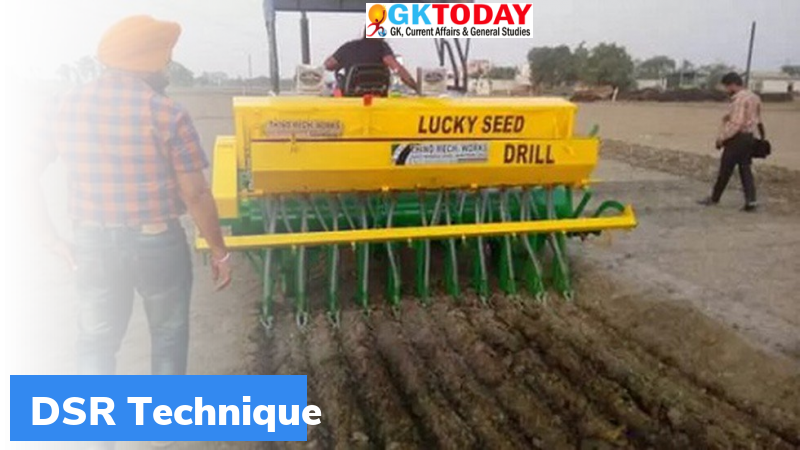Punjab: Incentives for Direct Seeding of Rice (DSR)
The Punjab government recently announced incentives for farmers opting for Direct Seeding of Rice (DSR).
How much incentive is provided by the Punjab government?
Rs. 1,500 per acre.
How Direct Seeding of Rice (DSR) technique is different from the Traditional transplantation method?
In the traditional method, where the paddy is transplanted, the farmer first prepares nurseries. The seeds are sown in these nurseries and raised to young plants. After 25-35 days, these seedlings are uprooted and sown in the field.
In the Direct Seeding of Rice (DSR) technique, the seeds are sown directly in the field rather than transplanting the seedlings. A tractor-powered machine is used to drill the seeds into the soil. There is no nursery preparation.
How much area in Punjab is under the DSR technique?
Last year, 5.62 lakh hectares of area in the state were under the DSR technique. This is 18% of the rice area in the state.
What is the government target?
Punjab government has the target of bringing 10 lakh hectares under the DSR technique.
Why Punjab government is encouraging the DSR technique?
Because the DSR technique helps in reducing water usage for growing the paddy crop.
How much water is required to grow one kg of rice?
According to the studies by Punjab Agriculture University (PAU) around 3,600 liters to 4,125 liters of water are required to grow one kg of rice depending on the paddy variety.
How much water is used in Punjab every year to grow rice?
Punjab needed 5,400 billion liters of water to produce 135 lakh tonnes of rice. This is based on the study of Punjab Agriculture University (PAU), which estimated that one kg of rice requires 4,000 liters in Punjab.
How much water can DSR help save?
According to an analysis by the Punjab Agriculture University (PAU), the DSR technique can help save 15% to 20% of water. In Punjab, DSR can save 810 to 1,080 billion liters of water every year if the entire rice crop is brought under the DSR technique.
What are the other benefits of the DSR technique?
- It solves the problem of labor shortage, as there is no nursery preparation in the DSR technique.
- It enables groundwater recharge as it prevents the development of the hard crust.
- The field studies also indicated that yield in the DSR technique is higher than puddled transplanted rice.
What is the extent of groundwater exploitation in Punjab?
Punjab is facing rampant depletion in its groundwater levels. Of the 150 blocks in Punjab, 117 are categorized as “overexploited” in terms of groundwater use.
Month: Current Affairs - May, 2022
Category: Science & Technology Current Affairs



